Marc Weidenbaum's Blog, page 99
May 31, 2023
This Week in Sound: Quantum Computing Utilizing Sonic “Phi-Bits”

These sound-studies highlights of the week originally appeared in the May 30, 2023, issue of the Disquiet.com weekly email newsletter, This Week in Sound. This Week in Sound is the best way I’ve found to process material I come across. Your support provides resources and encouragement. Most issues are free. A weekly annotated ambient-music mixtape is for paid subscribers. Thanks.
▰ HAZARD LIGHTS: The PionEar is the name of a little device that alerts drivers visually on the chance they can’t hear an emergency siren. The device, intended in part for deaf and hard-of-hearing drivers, is part of the 2023 Hackaday Prize. It was created by Jan Říha of Brno in the Czech Republic. It uses machine learning to identify sirens amid any other noise that penetrates a moving vehicle.

▰ CUSTOMS CLEARANCE: Toward the end of an interview with Danielle Venne of Made Music Studio about the sounds of the Nissan Leaf electric car is this tidbit: “And in case you’re wondering why we can’t make our own sounds for our electric vehicles: After the U.S. Department of Transportation finalized its ‘quiet car’ rule in 2018, there was some hope among EV owners that the new regulation would bring with it the option to fully customize the sound of an individual car. For a few years, it seemed like drivers would someday be able to select from a catalog of sound effects to signal when their car is backing up or slowly pulling forward. … But last summer, safety regulators scrapped that plan, saying there was a lack of data illustrating exactly why that level of customization would be necessary.” (Thanks, Rich Pettus!)
▰ NIGHTY NIGHT: The latest from the great Cities and Memory series of crowdsourced projects is “seeking field recordings from all over the world that reflect your interpretation of sleep, rest and tranquillity – these restful soundscapes could be drawn from the natural world or man-made sounds, rural or urban.” Tracks are due by June 30. “Artists will reimagine recordings from a treasure trove of birdsong, wave sounds, nature, song, bell chimes and other calming sound sources to develop a suite of brand new pieces that will help listeners all over the world to find sleep.”
▰ ACOUSTIC COMPUTING: If you think quantum computing is confusing, how about using non-quantum resources to simulate quantum computing … using sound? Welcome to the “phi-bit,” per work presented at the Acoustical Society of America in Chicago earlier this month: “Some properties of quantum computers can be imitated with sound trapped in a simple mechanical device. This has the advantage of being less fragile than quantum computers, while still replicating some of their properties. … Pierre Deymier at the University of Arizona and his colleagues glued together three aluminium rods, each a little over half a metre long, to create something that could act like a quantum bit, or a qubit, but with a much larger device. Qubits differ from conventional bits because, in addition to encoding information as 1s and 0s, they also have many so-called superpositions that are both and neither at once. … The researchers used speakers to create vibrations at one end of the stack, and detected them at the other. When the sound frequencies were tuned just right, localised ‘chunks’ of sound formed in the rods – the researchers named them ‘phi-bits’. Deymier says that information could be input into the phi-bits by tuning the sound.” Members of the team back in 2019 reported progress on using such rods in the development of ultrasonic transducers.
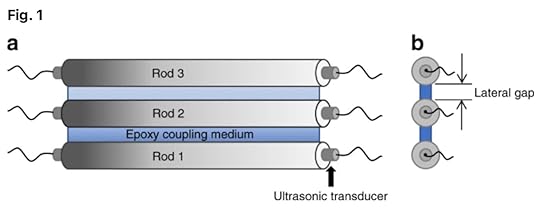
▰ COMB FILTER: How do you find a bird no one has recently seen and for which “no definitive recording of the bird’s call exists?” When it comes to the South Island kōkako, of New Zealand, you turn to math: “[I]t’s thought to sound something like its North Island cousin, and to be a haunting call with organ and flute-like notes and some other sounds mixed in. … Using this as a starting point, mathematician Stephen Marsland at Victoria University of Wellington algorithmically generated every conceivable variation of this kind of call, and has used these to comb billions of hours of audio recordings from different locations for possible South Island kōkako calls. In this way, his team was able to identify 250 possible calls, and then narrowed these down further to only five, which are now under review by experts.”
▰ THUNDER FROM DOWN UNDER: A letter to the editor at NewScientist proposes an explanation for animal awareness of earthquakes: “As to animals being scared before a quake, infrasound (sound below the audible range) creates fright, even in us. It can be used in soundtracks to arouse fear. But we tend to live in places where it is drowned out. The early rumblings of an earthquake would produce such sounds and perhaps these scare horses and other animals.”
▰ QUICK NOTES: Another Dimension: Andy Price reports on the promise of a “post-stereo world,” (musicradar.com) — and yes, variations on the word “immersive” appear over 30 times on the webpage. ▰ Tatooine You: On the 40th anniversary of The Empire Strikes Back, here’s Ben Burtt and Randy Thom (at starwars.com) discussing some of the sounds from the film, including the voice of Jabba the Hutt (“a made-up language … based on the Peruvian-Incan dialect, Quechua”). ▰ Pole Position: From the latest update to the video game Minecraft: “Environmental Audio Changes – Audio positioning for ambient sounds is now emitted relative to the camera’s location” (sportskeeda.com). ▰ Just Browsing:Learn about a Chromium extension called Chrome Hotword Shared Module that reportedly appeared in version 43 of Google’s open source browser platform, and that is said to have disappeared as of version 46 (makeuseof.com). ▰ High Pitch:Read up on the sonic branding of the women’s Rugby World Cup 2021 in Aotearoa (New Zealand), an “audible memento by embedding the live sounds of the match — such as young female superfans’ voices, play-by-play commentary and the stadium atmosphere” (thedrum.com). ▰ Egged On: Ordinary everyday chickens served as the source material for the sound of ferocious dinosaurs mating in Apple TV’s Prehistoric Planet (variety.com). ▰ Let’s Submerge: “Bubble curtains” can reduce the impact of sound in the ocean (hackaday.com). ▰ Color Code: The “Shriek of the Week” is that of the greenfinch, which produces “a sudden drawn-out wheeze. Often this makes an abrupt change of tone in the middle of the trilling conversation, as in the recording above” (shriekoftheweek.substack.com). ▰ Air Fare: Which airlines have the best boarding music (travolution.com)? ▰ Voiceover Kill: If you think there are already too many podcasts, just wait for impact of AI-produced ones (wired.com). ▰ Medallion Cartel: The debate about the magical qualities of the taxi whistle in the final episode of The Marvelous Mrs. Maisel was pretty wonderful. (And the way she stared at that microphone was something else.)
May 30, 2023
Sound Ledger
86: Percent of radio listening that takes place on radio receivers
8: Percent on phones
2: Percent on smart speakers
Source: insideradio.com.
May 29, 2023
Spectral Sounds: Unquiet Tales of Acoustic Weird
This review I wrote originally appeared in the May 2023 issue of The Wire, number 471, the one with Slayer drummer Dave Lombardo on the cover. The article appears here (for the first time from behind the paywall, now that the subsequent issue — the bright red one with the Fall on the cover — has come out) in ever so slightly edited form. As I noted at the time of its publication:
The primary observation I didn’t have room for in the review is that sound is so prevalent in horror that several of the other books in the British Library’s Tales of the Weird series, of which Spectral Sounds is part, employ it in the examples shown at the back of the book in the catalogue, and also on the publisher’s website. What distinguishes the stories in Spectral Sounds is that sound is central to each tale’s narrative, rather than just a colorful element of the mood-setting.
Here’s the review in full:
Spectral Sounds: Unquiet Tales of Acoustic Weird
Manon Burz-Labrande (Editor)
British Library Pbk 315 pp
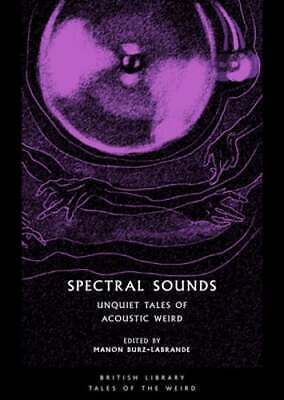
In 1866, Irish writer Ruth Mulholland, then aged 25, published a spooky story in All the Year Round, a periodical edited by Charles Dickens. She was two years old when Dickens exhibited ghostly expertise with A Christmas Carol (1843), in which we’re told “Scrooge was not a man to be frightened by echoes.” Mulholland developed an interest in sound’s potential for horror, and vice-versa. Titled “The Haunted Organist of Hurly Burly,” her tale involves a strange musician claiming to be betrothed to the deceased son of the organ’s caretakers.
“Hurly Burly” and 13 other stories comprise Spectral Sounds: Unquiet Tales of Acoustic Weird. Edited by Manon Burz-Labrande, a researcher and lecturer at Austria’s University of Vienna, the book is part of the British Library’s Tales of the Weird paperback series. Thematically linked sections highlight strange utterances (Thomas Street Millington’s “No Living Voice” from 1872), audible presences (Elizabeth Stuart Phelps’s “The Day of My Death” from 1868), and the post-apocalyptic soundscape (MP Shiel’s “The House Of Sounds” from 1911), among other eerie tropes.
Time does peculiar things to language. Expressions become — in LP Hartley’s formulation — foreign. Hartley’s horror isn’t collected here but we do get Edith Wharton, as well as Edgar Allan Poe’s “Siope — A Fable” (1837), thankfully more obscure than “The Tell-Tale Heart.” The book contains aged sentences that cause the reader to wonder how something once declarative becomes mystifying. Are these Lovecraftian prose poems casting the unfathomable oddness of our world? Oftentimes no, just plain English rendered weird by the years.
A few paragraphs into the opening story, Florence Marryat’s “The Invisible Tenants of Rushmere” (1883), we’re told by the narrator, a physician about to inadvertently rent a haunted house: “The hostages which I had given to fortune had made that strenuous action which attention to my numerous patients supplied incumbent on me.” This seems to mean the doctor works too hard; the reader may sympathize. Placing such a phrase early in the book was wise: it signals the reader to keep alert. Here be linguistic dragons.
Anxiety proves more impervious to time than does language. Archaic as some of the wording in Spectral Sounds may be, the many sources of its dread are familiar, occasionally to the point of feeling samey. Note the “whine of a door” and how “the wind whistled in at the keyhole,” not to mention the “curse of silence” and countless unidentifiable voices from beyond. These same evocations serve contemporary thrill writers and seekers alike to this day. Part of what makes sound so powerful a narrative tool is that the stories’ authors and characters are equally aware of the symbolic portent inherent in the ear’s duty as the human nervous system’s alarm. Algernon Blackwood, in his “A Case of Eavesdropping” (1906), sets a scene this way: “All was still but the howl of the wind, which to his ears had in it a note of triumphant horror.”
The scariest stories leave their mark. You close a book, exit a cinema, or power down the TV only to find that the images, the sounds, the psychic imprint, linger. One additional impact from Spectral Sounds — more obsession than haunting — is the wealth of further readings, both academic and fictional, recommended in the volume’s introduction and each story’s helpful preface. Consider yourself forewarned.
Junto Profile: Magnus Lindencrona (aka gis_sweden)
This Junto Profile is part of an ongoing series of short Q&As that provide some background on various individuals who participate regularly in the online Disquiet Junto music community.
What’s your name? Magnus Lindencrona is my real name. Although I don’t consider myself an artist, I have often used my login (gis_sweden) as an “artist name” on different sites, such as Soundcloud, YouTube, and Bandcamp. But I’m not consistent …
Where are you located? I live in a town south of Gothenburg on the Swedish west coast and work in Gothenburg. Commuting to and from work is inspiring as it gives me time to reflect, listen and observe.
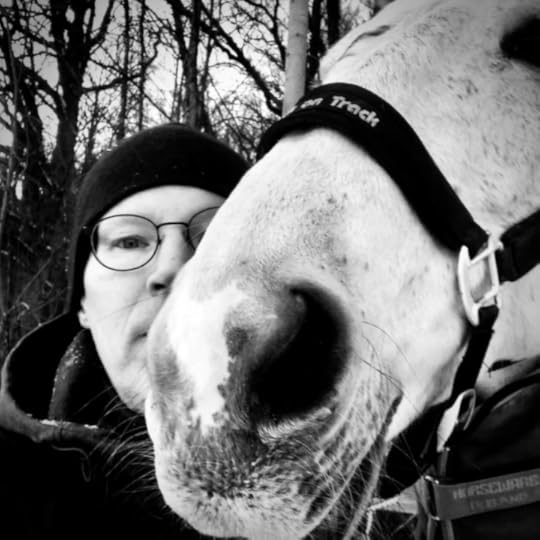
What is your musical activity? When I started making my own music, it began with what is called “synth pop” in Sweden. As a student, I had all the time in the world. But now, my head is always filled with ideas that I will never have the time to follow up on. Family, work and horse set the frames for musical excursions. Maybe that’s why I like the Disquiet Junto projects — to get a “compositional assignment.” I have also participated in SP-Forums beat battles. Now I’m a typical bedroom producer and can do what I want. One evening some years ago, I made this:
or
It belongs to an account which I have lost the password for, but I like it that way — make and forget. I know that BBC radio has used sounds made by me from Freesound.
What is one good musical habit? I believe in working with what you have — new gear will probably not help.
What are your online locations? I like to read threads on Lines (llllllll.co) and log in on ModWiggler sometimes. That’s enough for me.
What was a particularly meaningful Junto project? I don’t remember how I found the Junto Project — was it via ModWiggler? I don’t know. But I was fascinated by the experimental spirit. Just throw away conventions and record. Don’t care about likes — that’s my spirit. For me, it’s not important to make a nice track perfectly mastered; I don’t have time for that. Instead, I focus on the idea and creative part.
You mentioned using the gear you have. What do you work with? I consider my little modular synth as my main instrument. The synth is an all analog modular. But if I feel like it I can use DAW, SP-404SX, field recordings or any instrument in the house.
When you do the Beat Battles entries, do you add your own sounds, or just work from the provided samples? When I participate in beat battles I try to use only the provided samples, even if the rules says that you can add drums, bass etc. Working with limitations is fun.
May 28, 2023
Holly Haworth Listens to/for Oysters
Holly Haworth wrote an excellent essay recently for Nautilus, “What an Oyster Hears,” that might, in an earlier draft, have been titled “What an Oyster Might Hear,” since as she acknowledges early on, the oyster has no ear. However, the oyster does resemble an ear, and thus provides Haworth’s rangy article with plenty of opportunity to reflect on the creature as a living metaphor for so many forms of sonic reception.
There’s its presence at the shoreline, where the two very different habitats of our planet meet. There is the dense audio world beneath the ocean’s surface, which she experiences thanks to the use of a hydrophone. There is the work of acoustic ecologists to use sound for us to better understand the alien realms we live amid. And there is Jonathan Sterne’s proposed connection, from his book The Audible Past, between the rise of canned goods and of canned music (including a quote from John Philips Sousa that sums up modern anxieties many have about Spotify, AI, and their combination.)
To read the article is to witness Haworth’s own perceptions change, improve, elevate, and sharpen. She writes:
“The headphones amplified the sound of the oyster reef while they also made me feel alienated from my surroundings. I quickly noticed that I could hear much of the snapping without the help of the machine. By amplifying the noise and concentrating it in my ears, the headphones had helped to tune my listening, a useful technology. Now I realized what I could hear without them.”
The full piece is at nautil.us.
May 27, 2023
Scratch Pad: Lights, Construction, Files
I do this manually each Saturday, usually in the morning over coffee: collating most of the little comments I’ve made on social media, which I think of as my public scratch pad, during the preceding week (or in this case, the past two weeks). These days that mostly means post.lurk.org (Mastodon).
▰ The hazard lights in this electric car I’ve been driving aren’t mechanical. They make the familiar clicking sound for the first minute or so and then they turn off. The lights keep blinking but they no longer click. It has a vague “We’re done with the charade” vibe. What’s interesting is how it seems that in the transition from fossil fuel to electric, even things unrelated to gasoline end up electrified, rather than being left mechanical. Or something along those lines.
▰ For all the improvements of laptop computers over the years, the one I’m perhaps most thankful for is that the thing is immediately functional when I open it
▰ Sources of late-morning sounds: passing bus, washing machine, creaking of floorboards, neighbor’s garage door, gentle whir of air filter (allergy season), muffled voices as people walk by outside
▰ Sound of the day goes to the tiny, tinny radio on which a construction crew was listening to a sports event, the play-by-play announcement of which was reduced to some exceptionally narrow band of what might be described as the high treble spectrum. From halfway down the block, it was like listening to mice stage whisper, and it grew no more comprehensible as I approached. I’m not convinced the crew even understood much of it, either. It was more like a comforting story being told in an adult nursery.
▰ The best part of Succession ending will be never having to hear that melody again in yet another instrumental arrangement
▰ That thing where you take a handful of awkwardly named wav files that constitute an album and put them in iTunes (excuse me, Apple Music) and fix the song titles and add the year and the track numbers and the art, and then hit save, and it doesn’t break the set into three different mini-albums. And you take a slow breath as you back away and promise yourself never to touch those files again. Whew.
▰ It’s 2023. I don’t need to take my keychain out of my pocket to start the car. I do need to in order to access certain accounts from my computer.
May 26, 2023
Chairman of the Board
The Swiss artist Zimoun’s motorized cardboard sculptures are whimsical explorations of physical properties. He regularly assembles small armies of simple objects that, in combination, rapidly escalate into complex systems. He has gotten better and better over the years at documenting his work. The visuals in this recent video, for example, of a suspended grid of little boxes, suggest a virtual rendering, filmed as the materials are in such a bright white space.
The virtual-ness of the video reinforces the fundamentals-first quality that is the foundation of Zimoun’s installation art. Listen as the light brown cubes — each assembled with brown tape and hung with stark black strings from a panel as white as anything in George Lucas’ THX-1138 — gently rumble. There is white noise, and pink noise, and brown noise, and there is Zimoun noise.
May 25, 2023
Disquiet Junto Project 0595: Filter Progression
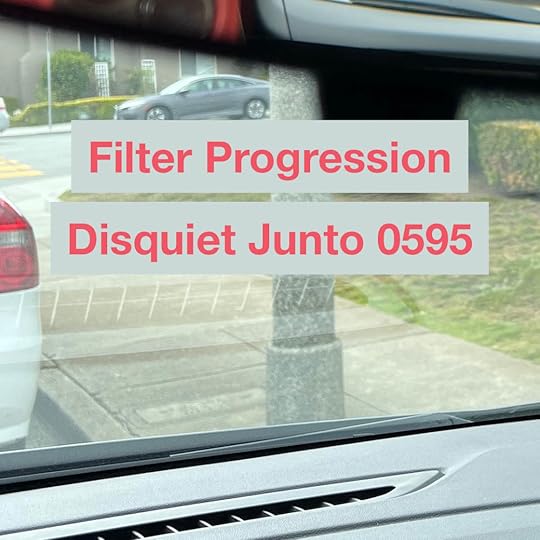
Each Thursday in the Disquiet Junto music community, a new compositional challenge is set before the group’s members, who then have just over four days to upload a track in response to the assignment. Membership in the Junto is open: just join and participate. (A SoundCloud account is helpful but not required.) There’s no pressure to do every project. It’s weekly so that you know it’s there, every Thursday through Monday, when you have the time and interest.
Deadline: This project’s deadline is the end of the day Monday, May 29, 2023, at 11:59pm (that is, just before midnight) wherever you are. It was posted on Thursday, May 25, 2023.
Tracks are added to the SoundCloud playlist for the duration of the project. Additional (non-SoundCloud) tracks appear in the lllllll.co discussion thread.
These following instructions went out to the group’s email list (at tinyletter.com/disquiet-junto).
Disquiet Junto Project 0595: Filter Progression
The Assignment: Make music by processing a static sound.
This project is the second of three that are being done in collaboration with the 2023 Musikfestival Bern, which will be held in Switzerland from September 6 through 10. The topic this year is « √ » — as the organization explains: “the radical, or square root symbol and the power of its symbolism are central to the festival and these will be translated into music in multifarious ways.” All three projects will engage with the work of Éliane Radigue, who is the Composer-in-Residence for the 2023 festival.
We are working at the invitation of Tobias Reber, an early Junto participant, who is in charge of the educational activities of the festival. This is the fifth year in a row that the Junto has collaborated with Musikfestival Bern.
Select recordings resulting from these three Disquiet Junto projects may be played and displayed throughout the festival.
Step 1: Choose a static sound, such as a field recording of a specific place, or a held tone, or a recording of noise.
Step 2: Experiment with animating the static sound selected from Step 1 by slowly, subtly, manually modulating it, using only filter frequency and resonance.
Step 3: Record a track resulting from the techniques you developed in Step 2.
Eight Important Steps When Your Track Is Done:
Step 1: Include “disquiet0595” (no spaces or quotation marks) in the name of your tracks.
Step 2: If your audio-hosting platform allows for tags, be sure to also include the project tag “disquiet0595” (no spaces or quotation marks). If you’re posting on SoundCloud in particular, this is essential to subsequent location of tracks for the creation of a project playlist.
Step 3: Upload your tracks. It is helpful but not essential that you use SoundCloud to host your tracks.
Step 4: Post your track in the following discussion thread at llllllll.co:
https://llllllll.co/t/disquiet-junto-project-0595-filter-progression/
Step 5: Annotate your track with a brief explanation of your approach and process.
Step 6: If posting on social media, please consider using the hashtag #DisquietJunto so fellow participants are more likely to locate your communication.
Step 7: Then listen to and comment on tracks uploaded by your fellow Disquiet Junto participants.
Step 8: Also join in the discussion on the Disquiet Junto Slack. Send your email address to marc@disquiet.com for Slack inclusion.
Note: Please post one track for this weekly Junto project. If you choose to post more than one, and do so on SoundCloud, please let me know which you’d like added to the playlist. Thanks.
Additional Details:
Length: The length is up to you. Sometimes longer is better.
Deadline: This project’s deadline is the end of the day Monday, May 29, 2023, at 11:59pm (that is, just before midnight) wherever you are. It was posted on Thursday, May 25, 2023.
Upload: When participating in this project, be sure to include a description of your process in planning, composing, and recording it. This description is an essential element of the communicative process inherent in the Disquiet Junto. Photos, video, and lists of equipment are always appreciated.
Download: It is always best to set your track as downloadable and allowing for attributed remixing (i.e., a Creative Commons license permitting non-commercial sharing with attribution, allowing for derivatives).
For context, when posting the track online, please be sure to include this following information:
More on this 595th weekly Disquiet Junto project, Filter Progression (The Assignment: Make music by processing a static sound), at: https://disquiet.com/0595/
About the Disquiet Junto: https://disquiet.com/junto/
Subscribe to project announcements: https://tinyletter.com/disquiet-junto/
Project discussion takes place on llllllll.co: https://llllllll.co/t/disquiet-junto-project-0595-filter-progression/
May 24, 2023
TWiS Listening Post (0002)

This went out this evening to paid This Week in Sound subscribers: a playlist from Amulets, Drowse, Tuonela, and the collaboration of Jeremiah Fraites and Taylor Deupree.
This Week in Sound: A Simulated Alien Transmission

These sound-studies highlights of the week originally appeared in the May 23, 2023, issue of the Disquiet.com weekly email newsletter, This Week in Sound. This Week in Sound is the best way I’ve found to process material I come across. Your support provides resources and encouragement. Most issues are free. A weekly annotated ambient-music mixtape is for paid subscribers. Thanks.
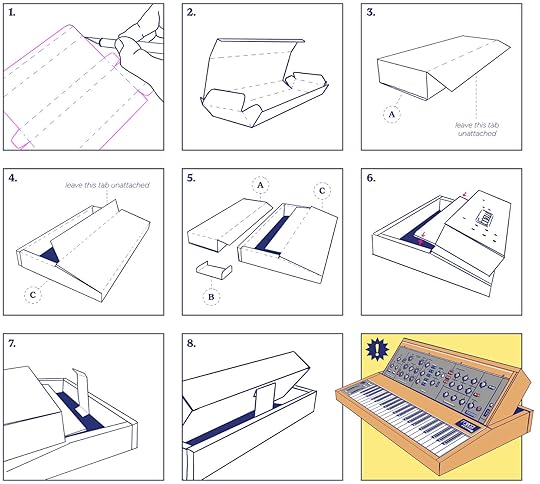
▰ SILVER SYNTH: There’s a cool new website (minimoogmodeld.com) that explores the Minimoog Model D on the occasion of the 70th anniversary of Moog Music, founded in 1953. “Designed by Pentagram partner Yuri Suzuki, the mini site — called the Minimoog Model D Factory — features an interactive eight-room house in which every chamber leads to a different experience, including a virtual Minimoog Model D that you can automatically adjust to distill the sounds used in different famous songs that span decades, styles, and creators, including Air and Frank Zappa,” writes Jesus Diaz for Fast Company. (Though that article seems to suggest that 2023 is the 70th anniversary of the Minimoog Model D, which I think actually came out at the start of the 1970s.)
▰ CHIRP UP: “The special thing about birdsongs is that even if people live in very urban environments and do not have a lot of contact with nature, they link the songs of birds to vital and intact natural environments,” said Emil Stobbe, an environmental neuroscience graduate student at the Max Planck Institute for Human Development and author of one of the studies.” (Read on the Washington Post’s website for free, thanks to a gift link.) Thus: “research also suggests that listening to recordings of their songs, even through headphones, can alleviate negative emotions.” (Thanks, Mike Rhode!)
▰ ROCKETS, MAN: We live close enough to the future that the phrase “the busiest spaceports in the world” can be used in the course of everyday life, and yet a question lingers as to whether those launches are bad for the environment. At least researchers are collating evidence: a team has been granted “close to US$1 million in funding from the US Army Corps of Engineers over 3 years to measure the soundscape and monitor a host of endangered and threatened species living near the Vandenberg base.” The study is multimedia, per an article in Nature: “Cameras will capture how animals react to rocket-launch sounds: for example, whether birds abandon their nests or change their foraging or mating behaviour. Audio monitors will pick up whether they alter their songs in response to the noise, in the same way that people yell after loud noise exposure. The birds will have some resilience, Hall says. ‘But at some point, there’s going to be a threshold where that resilience is overcome.’”
▰ X FACTOR: The great XKCD comic, by Randall Munroe, addressed restaurant noise in a recent post titled “Noise Filter.” Just one question: while comedy norms suggest the punchline (“ANY”) should be at the end of the phrase, don’t UX design norms suggest it should be on the left, since presumably it means an even lower threshold? (Thanks, Mike Rhode — and the Creative Commons license)
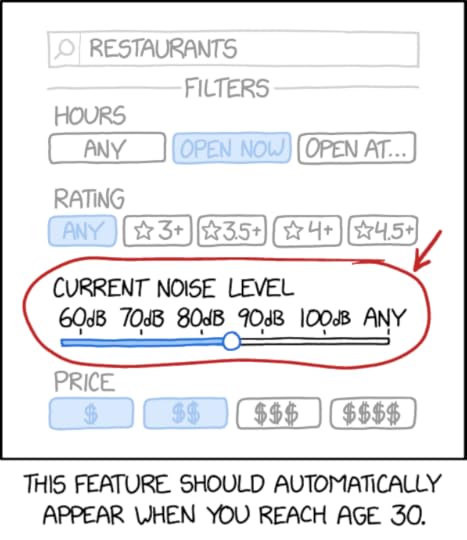
▰ TAKING SIDES: Does one of your ears seem more attentive than the other? Is it the left one? Science suggests this is the norm: “We demonstrate here that there is a preference in terms of space, and not hemisphere, with a clear pre-eminence of the left auditory space for positive vocalizations,” write Tiffany Grisendi, Stephanie Clarke, and Sandra Da Costa (all based in Switzerland) in the conclusion of their research, published in Frontiers in Neuroscience. Writes Mischa Dijkstra in a summary: “One aspect that affects the emotional ‘valence’ of sounds — that is, whether we perceive them as positive, neutral, or negative — is where they come from. Most people rate looming sounds, which move towards us, as more unpleasant, potent, arousing, and intense than receding sounds, and especially if they come from behind rather than from the front. This bias might give a plausible evolutionary advantage: to our ancestors on the African savannah, a sound approaching from behind their vulnerable back might have signaled a predator stalking them. … Now, neuroscientists from Switzerland have shown another effect of direction on emotional valence: we respond more strongly to positive human sounds, like laughter or pleasant vocalizations, when these come from the left.” (Thanks, Glenn Sogge!”)
▰ MARTIAN CHRONICLE: SETI is doing a simulation of an alien transmission: “On May 24 at 3:00 p.m. ET, the European Space Agency’s ExoMars Trace Gas Orbiter (TGO) will transmit an encoded message to Earth. A trio of ground-based radio observatories will attempt to receive the signal when it arrives 16 minutes later. The signal, an encoded message developed by artist Daniela de Paulis and her colleagues, will then be made available to the public, who are invited to try to make sense of the message,” per gizmodo.com. Because we live in 2023, the post-receipt decoding will occur on a Discord server (and this is pretty funny: when I signed up for the server I had to “prove” I was human, by using one of those CAPTCHAs — now that is meta). The image below shows an artist’s depiction of the Trace Gas Orbiter, from the ESA.

▰ IF I COULD: Scientists are coming to the aid of the endangered California condor, thanks to a high-tech egg. The New York Times spoke with Kelli Walker of the Oregon Zoo, which is doing the experiments: “Small data loggers tucked inside the shells can track the temperature and movement of the eggs. An audio recorder captures the sounds in the nest, which the zoo will play back to the eggs in the incubator. ‘Developing embryos can hear things through their shells,’ Ms. Walker said.” The goal of the effort is “to better replicate natural conditions in the artificial incubators that are key to its condor breeding efforts.” (Read for free thanks to this gift link — and thanks, Mike Rhode!)
▰ EPA FILTER: A non-profit group called Quiet Communities, Inc. (quietcommunities.org) is suing the EPA for “failure to perform non-discretionary duties” related to noise pollution. The weakening of the EPA’s response to noise issues reportedly dates back to 1981 at the start of Ronald Reagan’s two terms as president of the U.S. (Because life can read like a novel, the current administrator of the EPA is named Michael S. Regan.) Apparently the issue isn’t the lack of legislation; it’s about enforcement. “EPA is caught in this bind that they were still legally required to carry out the act, but they haven’t had anybody working on it in such a long time,” says Sidney Shapiro, part of the law faculty at Wake Forest University, who wrote “Lessons from a Public Policy Failure: EPA and Noise Abatement” about the matter.
▰ VOICES CARRY: Since “loss of speech ability can occur very suddenly through medical conditions like ALS,” it might be worth using Personal Voice service, announced as one of Apple’s accessibility features. It’s due to be part of the upcoming iOS 17. A user will be able to “create a synthesized voice that sounds like them for connecting with family and friends.” To explore the topic of augmentative and alternative communication (AAC) apps, MacStories interviewed David Niemeijer, the founder and CEO of AssistiveWare.
▰ INTERIOR MONOLOGUE: I dug this interview with the developer of the game Interior Worlds. One key excerpt: “I’ve played a lot of indie horror, and something I’ve noticed that goes underutilized is the impact of ‘background ambiance,’ like drones and pads. Some games opt for the more ‘classic’ style of atmosphere and music, such as a specific musical score to instill tension, which leaves little room for focus on the environment. The low, subtle rumbling and steady, monotonous drone of sweeps found throughout most of the game gave me more opportunity to let the player soak in their surroundings.” And another: “I liked the idea of having the player’s heartbeat grow louder as they approached the ‘anomalies’ as kind of a way to say, ‘Something’s not right … You’re not supposed to be here.’” Interestingly, Interior Worlds utilizes a system in which the player/character takes photos within the game, much like in Season, which I wrote about this month for The Wire. Unlike in Season, however, I don’t believe that in Interior Worlds you can make audio recordings.
▰ QUICK NOTES: MUBI Music: Blip Vert Report: Spotify reportedly “is developing Al technology that will be able to use a podcast host’s voice to make host-read ads — without the host actually having to read and record the ad copy,” per MSN(per The Ringer founder Bill Simmons). ▰ Tune In: Psychology Today digs into soundscape studies.▰ Forbin Project: ChatGPT’s iPhone app has introduced a speech feature (an Android version is due by the end of 2023 — you know, if civilization gets that far). ▰ Just Winging It: Surprise: living near an airport is bad for your sleep. ▰ On Cue: An episode on NPR looked at (or listened to) classic “needle drops” in movies; NPR’s Ayesha Rascoe spoke with Rico Gagliano, host of the MUBI Podcast (Thanks, Rich Pettus!). ▰ Garden Variety: The Shriek of the Week was the garden warbler, which “lacks the flutey variation of the blackcap, being buzzier and more babbling.” ▰ Screen Dream: Android’s Reading mode, which “can read out any text on your screen using a text-to-speech model,” has gained an update. (Is there an easy way to accomplish this on an iPhone?)



